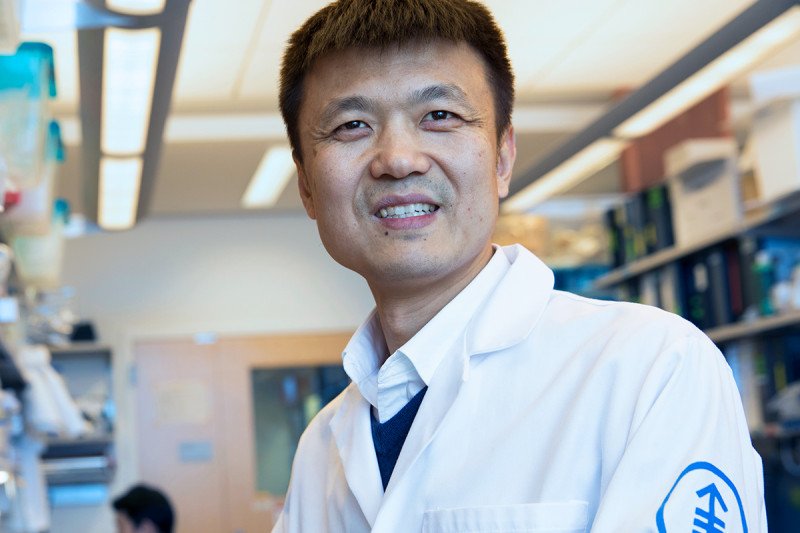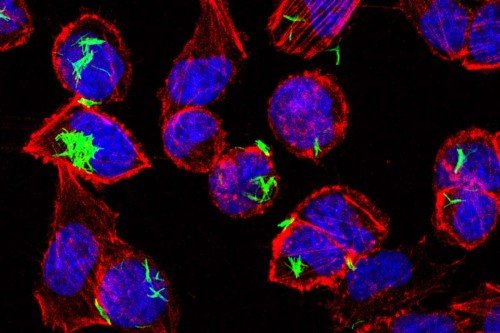
MSK immunologist Ming Li
The year 2021 marks the 100th anniversary of a fundamental discovery that’s taught in every biochemistry textbook. In 1921, German physician Otto Warburg observed that cancer cells harvest energy from glucose sugar in a strangely inefficient manner: rather than “burn” it using oxygen, cancer cells do what yeast do — they ferment it. This oxygen-independent process occurs quickly, but leaves much of the energy in glucose untapped.
Various hypotheses to explain the Warburg effect have been proposed over the years, including the idea that cancer cells have defective mitochondria — their “energy factories” — and therefore cannot perform the controlled burning of glucose. But none of these explanations has withstood the test of time. (Cancer cells’ mitochondria work just fine, for example.)
Now a research team at the Sloan Kettering Institute led by immunologist Ming Li offers a new answer, based on a hefty set of genetic and biochemical experiments and published January 21 in the journal Science.
It comes down to a previously unappreciated link between Warburg metabolism and the activity of a powerhouse enzyme in the cell called PI3 kinase.
“PI3 kinase is a key signaling molecule that functions almost like a commander-in-chief of cell metabolism,” Dr. Li says. “Most of the energy-costly cellular events in cells, including cell division, occur only when PI3 kinase gives the cue.”
As cells shift to Warburg metabolism, the activity of PI3 kinase is increased, and in turn, the cells’ commitment to divide is strengthened. It’s a bit like giving the commander-in-chief a megaphone.
The findings revise the commonly accepted view among biochemists that sees metabolism as secondary to cell signaling. They also suggest that targeting metabolism could be an effective way to thwart cancer growth.
Challenging the Textbook View
Dr. Li and his team, including graduate student Ke Xu, studied Warburg metabolism in immune cells, which also rely on this seemingly inefficient form of metabolism. When immune cells are alerted to the presence of an infection, a certain type called T cells shift from the typical oxygen-burning form of metabolism to Warburg metabolism as they grow in number and ramp up infection-fighting machinery.
The key switch that controls this shift is an enzyme called lactate dehydrogenase A (LDHA), which is made in response to PI3 kinase signaling. As a result of this switch, glucose remains only partially broken down and the cell’s energy currency, called ATP, is quickly generated in the cell’s cytosol. (In contrast, when cells use oxygen to burn glucose, the partially broken down molecules travel to the mitochondria and are further broken down there to make ATP on a delay.)
Dr. Li and his team found that in mice, T cells lacking LDHA could not sustain their PI3 kinase activity, and as a result could not effectively fight infections. To Dr. Li and his team, this implied that this metabolic enzyme was controlling a cell’s signaling activity.
“The field has worked under the assumption that metabolism is secondary to growth factor signaling,” Dr. Li says. “In other words, growth factor signaling drives metabolism, and metabolism supports cell growth and proliferation. So the observation that a metabolic enzyme like LDHA could impact growth factor signaling through PI3 kinase really caught our attention.”
Like other kinases, PI3 kinase relies on ATP to do its work. Since ATP is the net product of Warburg metabolism, a positive feedback loop is set up between Warburg metabolism and PI3 kinase activity, securing PI3 kinase’s continued activity — and therefore cell division.
As for why activated immune cells would preferentially resort to this form of metabolism, Dr. Li suspects it has to do with the cells’ need to produce ATP quickly to ramp up their cell division and infection-fighting machinery. The positive feedback loop ensures that once this program is engaged, it will be sustained until the infection is eradicated.
The Cancer Connection
Though the team made their discoveries in immune cells, there are clear parallels to cancer.
“PI3 kinase is a very, very critical kinase in the context of cancer,” Dr. Li says. “It’s what sends the growth signal for cancer cells to divide, and is one of the most overly active signaling pathways in cancer.”
As with immune cells, cancer cells may employ Warburg metabolism as a way to sustain the activity of this signaling pathway and therefore ensure their continued growth and division. The results raise the intriguing possibility that doctors could curb cancer growth by blocking the activity of LDHA — the Warburg “switch.”




